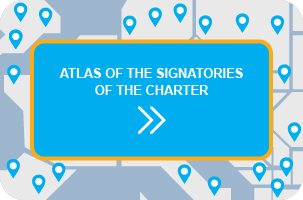Austrian Association of Cities and Towns-SORA: “Equality Index” of women mayors and councillors in Austria
[04/03/2021 – Original text provided by the Austrian Association of Cities and Towns (Österreichischer Städtebund)]
The Institute for Social Research of Austria (SORA) surveyed the proportion of women among all mayors and councillors in Austria as part of the “Equality Index” for the Austrian Association of Cities and Towns (AACT).
In a survey of data from a total of 2,095 cities and municipalities in Austria as well as the 23 districts of Vienna, the SORA Institute – along with the Austrian Association of Cities and Towns – determined the proportion of women at the top of local administrations (mayor, deputy), as well as the proportion of women local councillors. The figures were collected and evaluated as part of a large ongoing data collection, the so-called “Equality Index”.
The Equality Index 2021, for which data is currently being collected, maps the dimensions of health, care, protection against violence, mobility, employment, education, demography, child care and representation in relation to the municipal level. The first part, Representation, was presented on the occasion of International Women’s Day 2021. For the first time, the proportion of women in local councils was surveyed across the board and compared with one another at the federal state level.
The results are quite striking: at the forefront of city and municipal politics there are still almost exclusively men: They account for 91 percent of mayors in Austria, compared to the 9 percent of women mayors.
19 percent of deputy mayors are women while 81% are men, and 72 percent of the leading duos (in the municipalities where there are 2 mayors (or a mayor and a deputy mayor), 72% of these “dual leaderships” are entirely masculine.
Broken down to the federal states, it can be seen that the male leading duos are most common in Tyrol(85 percent) and least common in Vienna.
Three quarters of the seats in local councils across Austria are held by men
The composition of individual municipal and district representatives (Vienna) shows a similar picture: here, the overall proportion of women is an average of 24 percent compared to 76 percent of men in the municipal council. In 40 Austrian municipalities, there is not a single woman representative.
The comparison by territory size is interesting, because the larger the municipality, the higher the proportion of women representatives: while in Vienna the proportion of women in the district councils is 48 percent, this proportion is 45 percent in communities with over 200,000 inhabitants and it hovers around as low as 20 percent in municipalities between 500 and 1000 inhabitants.
Vienna, Lower Austria and Styria in lead with female local councillors
If one takes the respective municipal average per federal state, Vienna is at the top with a 48 percent share of women in the district councils, followed by Lower Austria and Styria, where an average of 26 percent of the municipal council mandates are female, followed by Burgendland and Salzburg (24 percent), Upper Austria (23 percent), Vorarlberg (22 percent), Carinthia (21 percent) and, lastly, Tyrol with 20 percent.
“The figures show that there is still a lot of catching up to do at the municipal level,” says Thomas Weninger, Secretary General of the Austrian Association of Cities and Towns.
“In local politics in particular, decisions are made that affect the immediate living environment – public transport, roads, housing, kindergartens and schools – and the urban and community environment as a whole. It should be a given that half of the resident population is also represented in political decision-making bodies,” demands Weninger. ” However, more women in politics is not only a logical share of power, but also an increase in the quality of the management of a city or local authority,” says Weninger.
“It is important to encourage women to engage in politics – and to create the framework for it. Vienna is a pioneer in this regard. Almost half of the district councils are composed of women. I am particularly pleased that Vienna is setting an example for other municipalities. It is important to me to empower women and to encourage them to take this step. We need more women in politics!”, says Kathrin Gaal, Chairwoman of the Women’s Committee of the Austrian Association of Cities and Towns and Vienna’s Deputy Mayor and City Councillor for Women.
Regarding the SORA study “Representation of women in local politics”
The figures on the representation of women in local politics were collected by the SORA – Institute for Social Research. The data is based on the states‘ statistical offices and own surveys. The results are part of the first Austrian Equality Index that SORA is currently developing on behalf of the Austrian Association of Towns and Cities.
Download the powerpoint presentation here (EN, FR, DE) – Translation to French and English by Romane Seas.
Inquiry note for the media:
Saskia Sautner
Austrian Association of Towns and Cities, Communication:
Tel .: +43 1 4000 89990, Mobile: +43 676 8118 89990;
Email: saskia.sautner@staedtebund.gv.at; www.staedtebund.at
SORA – SORA Institute for Social Research and Consulting Ogris & Hofinger GmbH















